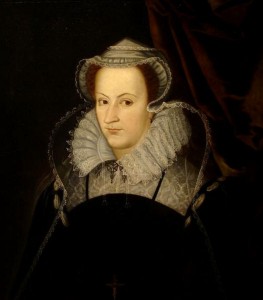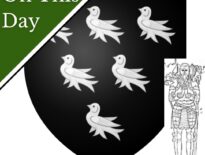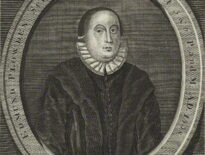 On this day in Tudor history, 7th February 1587, the warrant for the execution of Mary, Queen of Scots, arrived at Fotheringhay Castle in Northamptonshire, where Mary was being held.
On this day in Tudor history, 7th February 1587, the warrant for the execution of Mary, Queen of Scots, arrived at Fotheringhay Castle in Northamptonshire, where Mary was being held.
Mary had been tried for treason in October 1586 after being implicated in the Babington Plot, a plot to depose Queen Elizabeth I and to replace her with Mary. She had been found guilty and sentenced to death, but Elizabeth would not sign the execution warrant, not wanting the responsibility of killing an anointed queen. However, Mary’s gaoler, Sir Amias Paulet, would not agree to quietly doing away with Mary, and after pressure from her council and petitions from Parliament, Elizabeth finally signed the warrant, although she later said she had asked for it not to be sent to Fotheringhay yet.
The queen’s council, however, sent it immediately to Paulet, who wasted no time in arranging Mary's execution. On the evening of 7th February 1587, Paulet, his assistant Sir Drue Dury, and George Talbot, Earl of Shrewsbury and Henry Grey, Earl of Kent, visited Mary. Shrewsbury, who had always treated the Scots queen kindly, went down on one knee in front of her, read out the warrant and informed her that her execution would take place the next day. A worried Mary was reassured by Drury that she would not be quietly murdered like Richard II, saying, "Madam, you need not fear it, for that you are in the charge of a Christian Queen." Mary then thanked the men, saying:
“I do not think the queen, my sister, would have consented to my death, as I am not subject to your law and jurisdiction. But, seeing her pleasure so, death shall be most welcome; neither is that soul worthy of the high and everlasting joys above, whose body cannot endure one stroke of the executioner. I thank you for such welcome news. You will do me a great good in withdrawing me from this world, out of which I am very glad to go… I am of no good and of no use to anyone.”
Mary crossed herself and continued: "I am quite ready and very happy to die, and to shed my blood for Almighty God, my Saviour and my Creator, and for the Catholic Church, and to maintain its rights in this country", seeing herself as a martyr. She then asked for her chaplain, a request which was denied her, and then set about preparing herself for her death.
After supper, where she drank to her servants’ health, Mary prayed, made her will, distributed her belongings between her ladies and servants, and then wrote some letters of farewell, including one to her brother-in-law, Henry III of France, in which she stated “I scorn death and vow that I face it innocent of any crime” and continuing: “The Catholic faith and the defence of my God-given right to the English throne are the two reasons for which I am condemned, and yet they will not allow me to say that it is for the Catholic faith that I die...”
Mary was executed the following day, 8th February 1587, in a rather botched execution.
Also on this day in Tudor history...




Leave a Reply